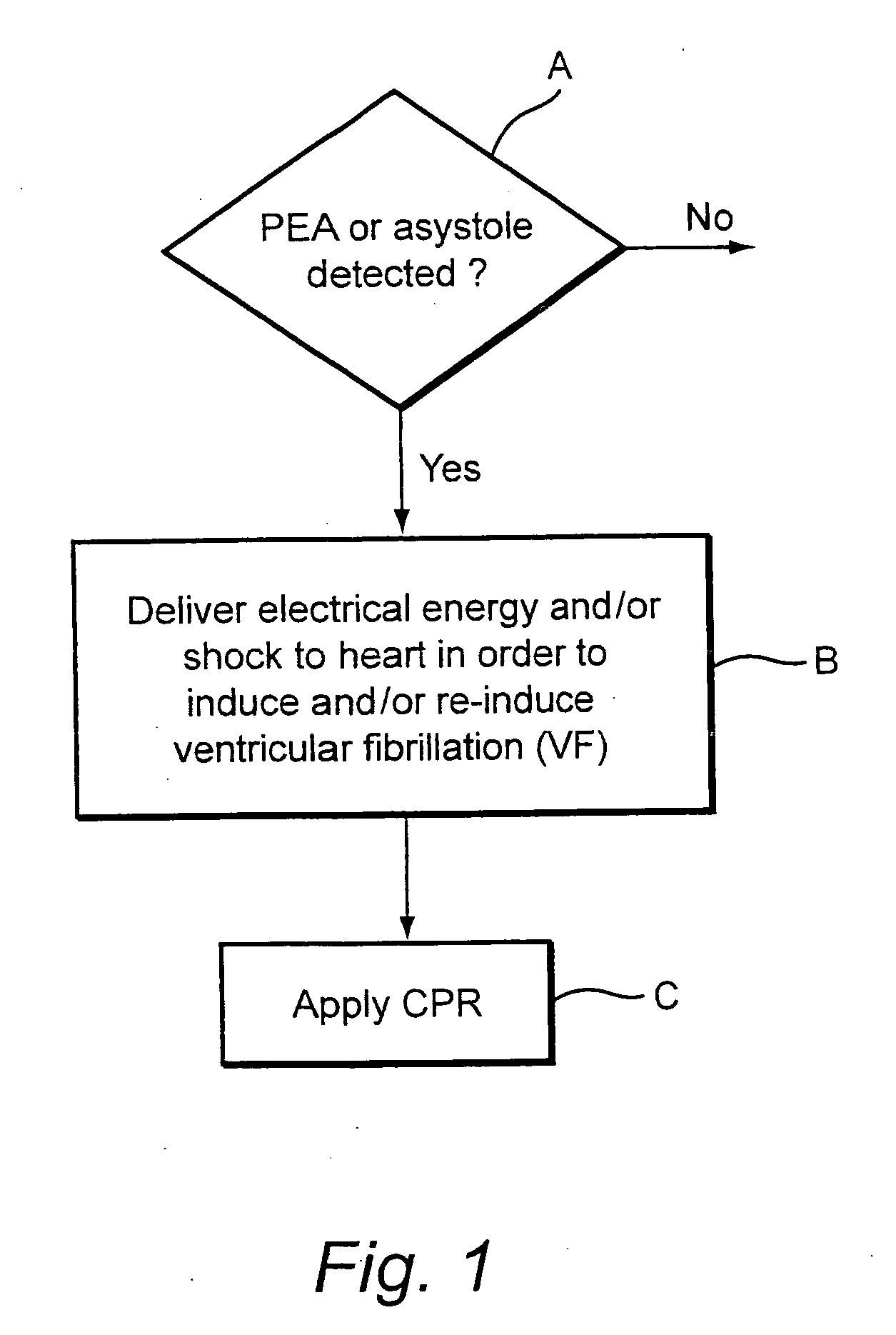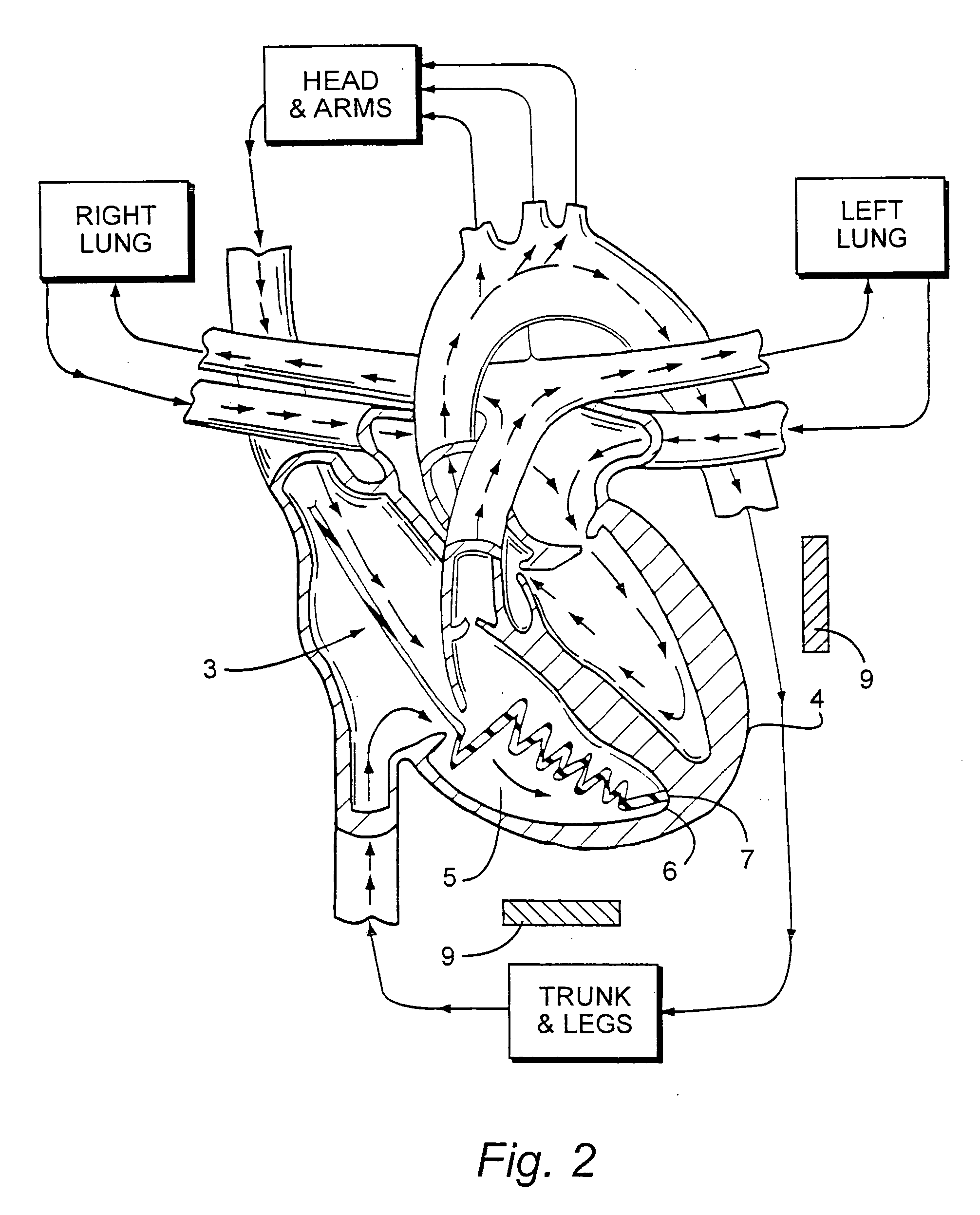System and/or method for refibrillation of the heart for treatment of post-countershock pulseless electrical activity and/or asystole
a technology of pulseless electrical activity and heart valve, which is applied in the field of system and/or method for heart valve refibrillation for treatment of, can solve the problems of patient death, ventricular fibrillation, and difficulty in detecting the use of conventional electrical shocks or countershocks, and achieve the effect of improving the chance of survival from post-countershock pea and/or asystol
- Summary
- Abstract
- Description
- Claims
- Application Information
AI Technical Summary
Benefits of technology
Problems solved by technology
Method used
Image
Examples
Embodiment Construction
[0017]As explained above, countershock termination of prolonged ventricular fibrillation (VF) frequently results in pulseless electrical activity (PEA) and / or asystole, neither of which allow the heart to beat and produce blood flow. Resuscitation from these postcountershock rhythms (PEA and asystole) rarely proves successful given conventional techniques.
[0018]According to certain example embodiments of this invention, it has surprisingly been found that re-induction of ventricular fibrillation (VF) (i.e., refibrillation or RF), followed by restoration of blood flow with cardiopulmonary resuscitation (CPR), is highly beneficial when performed on a patient's heart suffering from pulseless electrical activity (PEA) and / or asystole. This has been found to make subsequent countershocks more successful in restoring a heart rhythm associated with good blood flow. As explained above, PEA and / or asystole often arise after electrical shock(s) / countershock(s) is / are used in order to terminat...
PUM
 Login to View More
Login to View More Abstract
Description
Claims
Application Information
 Login to View More
Login to View More - R&D
- Intellectual Property
- Life Sciences
- Materials
- Tech Scout
- Unparalleled Data Quality
- Higher Quality Content
- 60% Fewer Hallucinations
Browse by: Latest US Patents, China's latest patents, Technical Efficacy Thesaurus, Application Domain, Technology Topic, Popular Technical Reports.
© 2025 PatSnap. All rights reserved.Legal|Privacy policy|Modern Slavery Act Transparency Statement|Sitemap|About US| Contact US: help@patsnap.com



